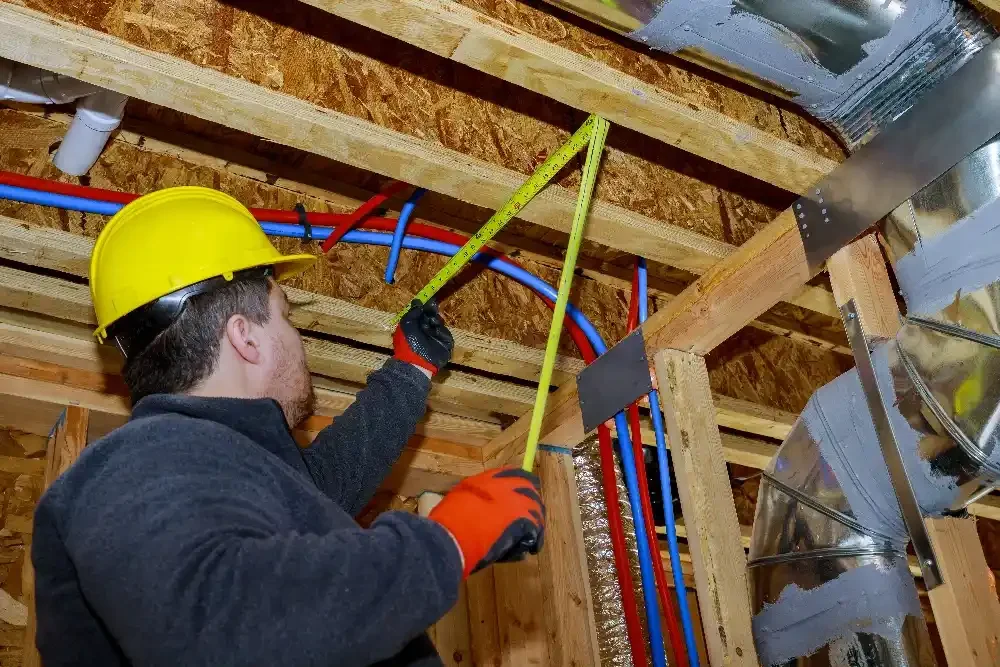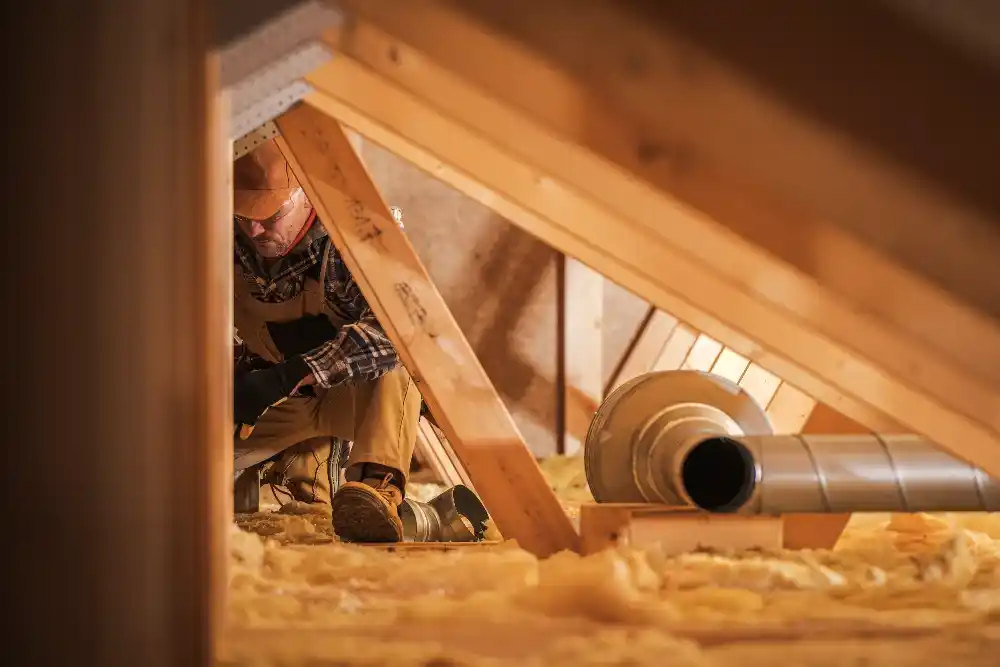Your attic is similar to the cap on your home’s energy bottle. If it is not properly sealed, energy seeps away. You might be wondering, “How much insulation do I need in my attic?” That’s an excellent question! The fact is that no single solution works for everyone. But do not worry. We’ll guide you through the essential topics, basic actions, and subtle secrets to ensure you get it correctly.
Adding the appropriate quantity of insulation has a significant effect. It reduces your energy expenditures, keeps you warm all year round, and protects your home from dampness. So, let’s roll up our sleeves and get started!
Recommended R-Values by Climate Zone
First, let us discuss R-values. This figure indicates how well the insulation can withstand heat flow. The greater the R-value, the more effective the protection. But wait a minute—it varies with the environment. Here’s a brief cheat sheet of R-values by climatic zone:
- Zones 1 and 2 (Hot): Aim for R30-R49
- Zone 3 (warm): R30-R60 is your objective
- Zone 4 (mixed): Continue with R38 to R60
- Zones 5-8(Cold): Go for R49 to R60
If you’re wondering how much insulation do I need in my attic, first determine your climatic zone. Once you know this, you have a starting point.
- Zone 1 & 2 (Hot): Aim for R30 to R49
- Zone 3 (Warm): R30 to R60 is your target
- Zone 4 (Mixed): Stick with R38 to R60
- Zones 5–8 (Cold): Go for R49 to R60
Factors Affecting Your Insulation Needs
Sometimes, it’s more than just statistics. Many factors influence how much insulation in the attic is appropriate for your home. Let’s break them down.
Existing Insulation
Look up into your attic. If you can see the floor joists, you probably need to add insulation. Insulation that is thin, spotty, or outdated is insufficient. If it appears flat or dusty, that’s a major warning sign.
Attic Ventilation
Have you heard the term “Don’t put the cart before the horse”? Before installing insulation, make sure you have adequate ventilation. If moisture accumulates in your attic, insulation will not operate properly. Vents allow air to circulate, keeping your attic fresh and dry.
Home Age and Construction
Older dwellings were built to varying standards. If your home is more than a few decades old, the insulation is most likely too thin or lacking in certain areas. Modern houses adhere to tougher rules. So, if your property is older, it’s time to reconsider how much insulation in the attic is truly adequate.
Local Building Codes
Building regulations are crucial for maintaining standards. Your municipal codes specify the minimum insulation levels necessary. These guidelines help you determine how much insulation for the attic you’ll need to be compliant and comfy.
How Much Insulation Do I Need In My Attic?
This gets to the heart of the situation. Are you ready to find out? Let’s take this step by step:
Measuring Your Attic Space
Get a tape measure. Measure the length and breadth of your attic floor. Multiply the two integers. That is your square footage. Write it down. You will need it!

Converting R-Values to Insulation Depth
Different materials require different depths. Here is a basic breakdown:
Calculating the Amount of Insulation Material Needed
Multiply your attic’s square footage by the required depth. For safety, add 10%. Trust me, those corners and strange locations gobble up more material than you realize!
- Fiberglass batts: R-30 requires about 9.5 inches.
- Loose-fill cellulose: R-49 requires around 13 inches
- Spray foam: R-38 is approximately six inches thick.
Knowing this allows you to simply determine how much insulation I need in my attic based on the type you select.
How Do I Know If I Have Enough Insulation In My Attic?
Look around your attic. If you can readily see the beams, you are short. Feeling drafts in the winter or hotspots in the summer? That is another hint. High energy costs and inconsistent temps both cry, “Add more insulation!”
And here’s a fun test: place your hand on the ceiling during severe weather. If your attic seems hot or chilly, it is not functioning properly.

What is the Proper Way to Install Insulation?
Installation is crucial. First and foremost, wear safety gear. Must-have items include gloves, goggles, and a mask. Seal all air leaks before laying down anything. Small gaps make a significant difference.
Never block the vents! Airflow is your insulation’s greatest ally. Distribute insulation evenly. Do not stuff it down. Compressed insulation loses efficacy. If you’re utilizing blown-in insulation, utilize a rented blower to disperse it evenly.
Still, wondering how much insulation should be in your attic? It is sometimes preferable to seek pro assistance.
Installing Attic Insulation: DIY vs. Professional
Let us be honest. DIY is appealing. You can do it yourself if your attic is open, easy to reach, and has no problematic spots. However, if you’re dealing with tight spaces, complicated constructions, or moisture problems, it’s time to call in the cavalry.
Professional installers understand what to look for. They identify problems that you might overlook. They also assure accurate R-values, optimum ventilation, and complete covering. So, if you’re wondering how much insulation I need, you need also to consider if you can install it yourself. It might be beneficial to delegate tasks to specialists.
Wrapping Things Up — Don't Leave It Guesswork!
Finally, determining how much insulation do I need in my attic involves a few easy steps: Check your climatic zone, measure your area, and examine your home’s specific requirements. Do not cut corners. Poor insulation causes energy waste, discomfort, and increased expenditures. When in doubt, seek expert guidance. Better safe than sorry!
Clarke & Rush make attic insulation straightforward and hassle-free. Not sure how much attic insulation is appropriate for your home? We have your back! Our staff carefully conducts inspections, suggestions, and installations.
Visit or call us now. Let’s make your house energy-efficient and comfortable!







